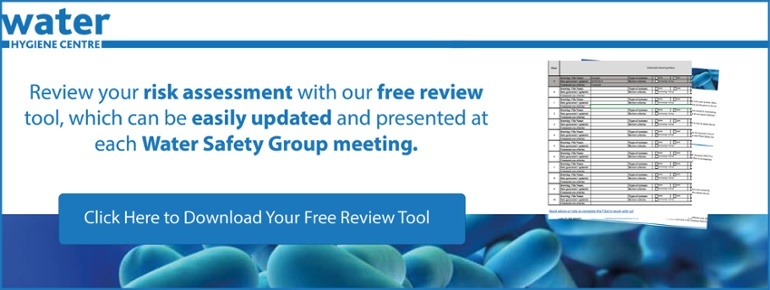With average summer temperatures of around 22°C - 30°C cases of Legionnaires’ disease are known to increase. This is partly due to increased ambient temperatures that encourage bacterial proliferation in water systems if the right conditions are present.
Legionella Guidance in the UK
The UK has some of the most robust guidance regarding Legionnaires’ disease. Still, there is a lack of information regarding how to approach the issue of increased water temperatures in the summer months. The guidance is based, for the most part, on a continuous control programme albeit one that ought to react appropriately to failures or other indicators of poor performance.
Legionella Issues in Summer
Legionella bacteria begin to multiply at temperatures above 20°C and some regions of the UK receive mains cold water over 25°C during the height of the summer, this can be considered a foreseeable risk factor. The Water Supply (Water Quality) Regulations however states that water can be supplied at up to 25°C to premises which conflicts with HSG274 and HTM04-01: Safe water in healthcare premises guidance on water temperature for the control of legionella.
In these cases those persons responsible for water safety should revise their Legionella risk assessment and control measures to meet the guidance, however when incoming water temperatures exceed 25°C then the water company should be notified, which must investigate and remedy the high water temperature.
In 2017 a man from Norfolk died due to inhaling Legionella bacteria emanating from a hosepipe containing stagnant water, which was well documented in the national press.
 Market square fountains, interactive water features and plaza features are turned on during this time. We have seen an increase in the installation of children’s splash parks, where one such installation in Oxford was closed in 2023 due to Legionella bacteria.
Market square fountains, interactive water features and plaza features are turned on during this time. We have seen an increase in the installation of children’s splash parks, where one such installation in Oxford was closed in 2023 due to Legionella bacteria.
Spa pools including “hot tubs” were implicated in 5% of confirmed cases in the UK from 1980-2010, and sales of these domestically have experienced a significant rise in recent years.
In summary, we tend to get more “inventive” with water in the summer and expose ourselves to risk in many different ways.
Previous data from Public Health England (now UKHSA) implicated travel abroad as the principal reason for around 40% of confirmed cases of Legionnaires’ disease in the UK. Typically, we tend to book our holidays during the British summertime, which can expose us to potentially poorly managed water systems, warmer cold water, and increased air conditioning systems.
 There is also an increased Legionella risk in the summer months in buildings that remain vacant for long periods such as schools, colleges, and universities. It’s important that monitoring and maintenance tasks are kept up to date during long periods of little or no use and that cover should be in place for the absent personnel involved in the management, operation, and maintenance of water systems. Individuals assigned to cover these responsibilities should be familiar with the water systems and the control procedures and be competent to carry them out.
There is also an increased Legionella risk in the summer months in buildings that remain vacant for long periods such as schools, colleges, and universities. It’s important that monitoring and maintenance tasks are kept up to date during long periods of little or no use and that cover should be in place for the absent personnel involved in the management, operation, and maintenance of water systems. Individuals assigned to cover these responsibilities should be familiar with the water systems and the control procedures and be competent to carry them out.
The increased use of water based air cooling systems during summer months can also be a concern. In particular, using portable evaporative air coolers, that don’t get used for much of the year and are not properly maintained can create problems.
Evaporative coolers were identified by NHS Estates in 1996 [Safety Notice NHSE SN(96)06 – ‘Evaporative type cooling fan] as a device that shouldn’t be used in healthcare facilities unless approved by the Infection Prevention Control (IPC) Team with strict control maintenance procedures in place. HTM04-01 Part B details that the use of such devices rests with the IPC Team.
Are these devices in use within your healthcare facility and are they not known?
What can you do to Prevent Legionella Outbreaks During Summer Months?
Whilst we cannot directly influence the water temperature supplied to our premises by the water supply company, there’s a lot we can do to mitigate the risk of bacterial proliferation once the water has entered our buildings.
Your Water Safety Plan should be updated to reflect the increased risk when there is a high ambient temperature. Increasing the flushing frequency for little-used outlets and more widespread temperature monitoring should be considered alongside a Legionella sampling regime. It’s also important to check cold water storage tank temperatures more regularly when there are high temperatures (at least annually).
All water systems should be properly risk assessed so that varying risks during summer can be appropriately managed.
Healthcare settings where there are patients with an increased susceptibility may require further control measures, If site-wide cold water temperatures are consistently high and/or sampling results suggest bacterial growth, then further engineering solutions should be developed. Examples include:
- Minimising water age through the correct sizing of pipework & storage systems and/or removal of unnecessary storage;
- Where possible, cold water pipework situated close to sources of heat (e.g. hot water pipework, radiators, warm plant rooms, steam pipework etc.) should be re-located;
- Thermal insulation of pipework and storage tanks should be checked and upgraded as required.
More radical options such as refrigeration or biocidal treatments may also be considered as part of the solution! However such options should be considered by the Water Safety Group (WSG).
See our FAQ page about Legionella, water hygiene, and waterborne pathogens
Feel free to reach out if you have any questions about the issues mentioned above or if you would like to consult with one of our experts on water hygiene.
Editor’s Note: The information provided in this blog is correct at the date of original publication – July 2019. (Revised August 2024)
© Water Hygiene Centre 2024










